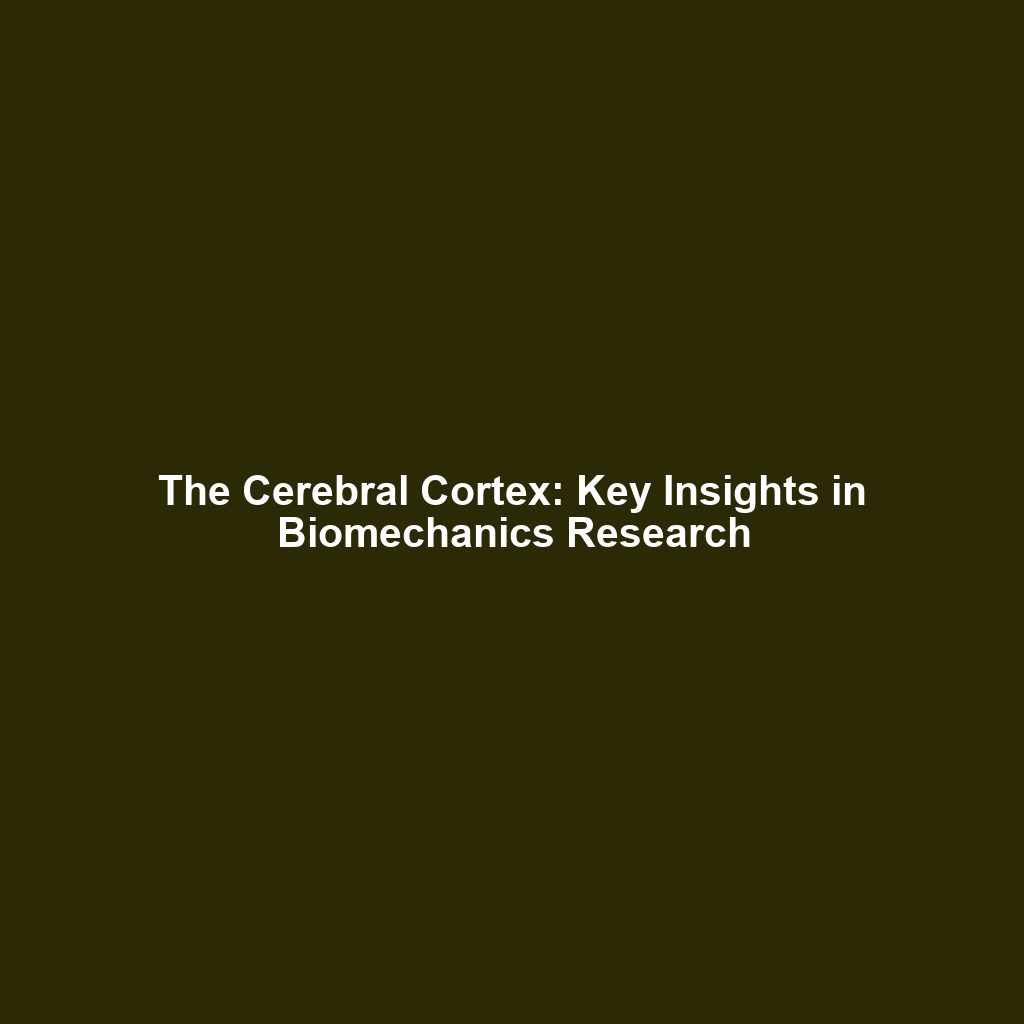The Cerebral Cortex and Its Role in Biomechanics
Introduction
The Cerebral Cortex, a critical region of the brain, plays an essential role in various biological functions and movements. Understanding its biomechanics is vital for comprehending how the brain orchestrates motor control, sensory perception, and complex cognitive tasks. By examining the interplay between the Cerebral Cortex and biomechanics, researchers can uncover the intricate mechanisms that facilitate bodily movement and coordination, making it a focal point in both neuroscience and biomechanics.
Key Concepts
Anatomy of the Cerebral Cortex
The Cerebral Cortex is the outer layer of the brain, characterized by its folded, wrinkled surface. It consists of four major lobes—frontal, parietal, temporal, and occipital—each associated with specific functions and processes fundamental in biomechanics, such as movement control and sensory integration.
Motor Control and Coordination
In biomechanics, the Cerebral Cortex is crucial for motor control. The primary motor cortex, located within the frontal lobe, is responsible for generating voluntary movements. This area interacts with the spinal cord and various brainstem structures to coordinate precise muscle contractions and maintain balance.
Sensory Integration
The Parietal Lobe of the Cerebral Cortex processes sensory information, allowing for spatial awareness and sensory-motor integration, which is vital for effective maneuvering and balance in physical activities.
Applications and Real-World Uses
The Cerebral Cortex’s insights have significant implications in biomechanics, particularly in rehabilitation and biofeedback technologies:
- Neuroprosthetics: Innovations in neuroprosthetics utilize signals from the Cerebral Cortex to control artificial limbs, allowing for improved movement and functionality.
- Physical Therapy: Understanding the neural mechanisms within the Cerebral Cortex aids therapists in designing targeted rehabilitation programs for individuals recovering from injuries.
- Sports Science: Analyzing how the Cerebral Cortex influences motor skills enables athletes to enhance performance through tailored training regimens.
Current Challenges
Despite advancements in understanding the Cerebral Cortex in biomechanics, researchers face several challenges:
- Limited access to direct neural data in live subjects.
- Complexity in mapping neural pathways associated with specific biomechanical functions.
- Variability in individual brain structures and their impact on movement control.
Future Research and Innovations
Future research in the biomechanics of the Cerebral Cortex promises exciting innovations:
- Brain-Computer Interfaces (BCI): Advancements in BCI technology could lead to greater integration of cognitive processing and biomechanical movements.
- Neuroimaging Techniques: Enhanced imaging techniques will allow for a deeper understanding of the Cerebral Cortex’s role in biomechanics, facilitating more accurate assessments.
- Regenerative Medicine: Ongoing research into neuroregeneration may soon provide solutions for neural repair mechanisms affecting biomechanics.
Conclusion
In conclusion, the Cerebral Cortex is pivotal in understanding biomechanics, influencing everything from motor control to cognitive function. By exploring its complexities, we can improve interventions in rehabilitation, athletic performance, and neuroprosthetics. For further reading, visit our sections on Neuroprosthetics and Rehabilitation Techniques.
